A 1947 Dairy Queen's unsettled future; Neon Park's rescue mission; status check on Taco Bell's Numero Uno; a 'peach' of a roadside relic
Plus, I have more bulletins from "The Great American Retro Road Trip."
There’s a Dairy Queen that is like none other, and its future is suddenly unsettled.
Dating to 1947, the DQ is Roseville, Minnesota, is a curiosity, a tall, glass jewel box on a cream concrete base with slanted windows, topped by a blue-trimmed roof and the architectural cherry on top — the classic 1950s-era Dairy Queen neon sign. Betraying my East Coast roots, this Dairy Queen is like an old-school Carvel stand on steroids. I don’t believe another DQ like it was ever built, but please educate me if you know otherwise.
The Roseville Dairy Queen has long been in contention with the DQ in Rochester for the title of oldest in Minnesota. The Rochester one has not opened since last year, its future up in the air when it was put up for sale, and now, the Roseville store is also surrounded by uncertainty instead of the usual lines of soft-serve lovers.
Indeed, spring is off to a chilly start here because the store has not reopened as usual on the first day of the season, when ice cream cones are traditionally given away. The longtime operators of the DQ are no longer running the shop — they went “out of business,” according to the Roseville Reader. Lexington Plaza, the shopper center where the DQ sits, owns the DQ and has taken control of the building.
The Roseville Reader reports the plaza’s owners would like the structure to carry on as a Dairy Queen, and said the easiest solution would be to have an existing franchisee pick up the Roseville store. There are reportedly talks happening with just such an entity.
But such matters are not easy, and Dairy Queen corporate would, of course, need to sign off. The corporation has reportedly been hostile toward legacy stores, insisting they jettison vintage signage and architecture and upgrade to the “Grill and Chill” concept.
Would DQ use this as an opportunity to change the Roseville store? Those with long memories may remember this store almost got overhauled more than a decade ago until a preservationist pushback spared it, so in a manner of speaking, this Dairy Queen has long been on borrowed time.
But there is cause for optimism. The owners of the DQ building are hoping they can have the shop back in business by this summer, and no matter what happens, they told the Roseville Reader they have no intention of demolishing this 78-year-old roadside gem.
This Dairy Queen is featured in my book, “The Great American Retro Road Trip.” You can preorder it here or at any online book merchant or local or chain bookstore.
Que pasa with Taco Bell’s Numero Uno?
Glen Bell opened the first Taco Bell in 1962 on Firestone Boulevard in Downey, California, not far from what is now the world’s oldest-operating McDonald’s. “Numero Uno,” as the former Taco Bell is affectionately called, left the chain in the 1980s but stayed in the Mexican food business. When I first visited in 2011, it was operating under the name Tacos Raul.
When the historic structure was imperiled a few years later, Taco Bell stepped in after the Downey Conservancy raised the alarm, rescuing the building in November 2015. Old Numero Uno was mounted on a flatbed truck and deposited at Taco Bell’s corporate headquarters in Irvine.
And there it’s sat ever since, in a corner of the parking lot.
I’d seen many photos of Numero Uno with an old-school sign applied to it, parked incongruously on the corporate campus. I visited in May 2024 hoping to snag a picture for my book when, instead, I found it wrapped in a blue tarp, presumably to protect it from further decline
LAist got curious enough to nose around and see what’s going on with Numero Uno, and why a decade has come and gone with no plans implemented for a novel use for the historic structure.
"We love Numero Uno," Taco Bell told LAist. "We don’t have any plans to share at the moment for what’s next, but we’ll be sure to bring you along when we do."
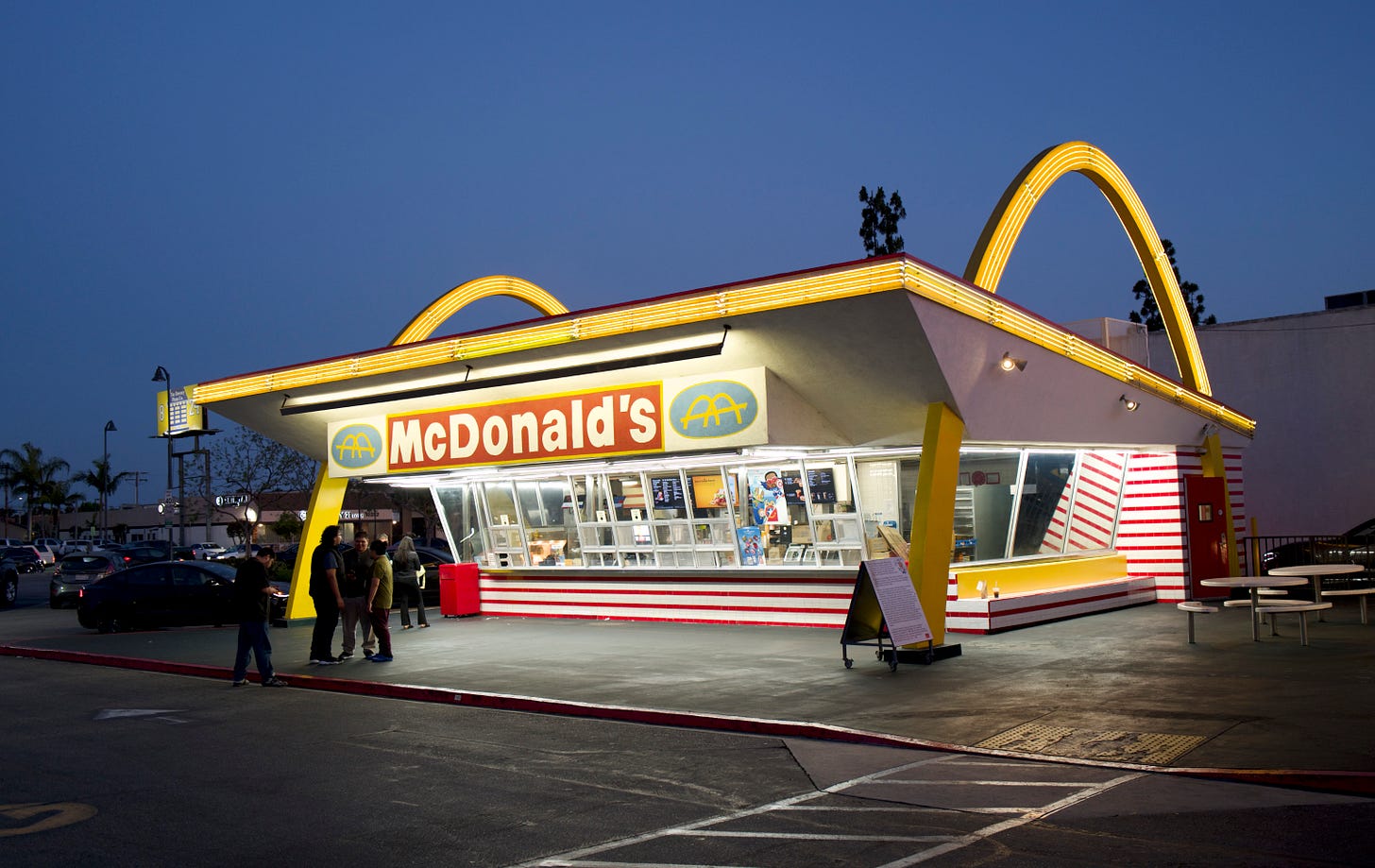
LAist, quoting the conservancy’s George Redfox, said the best solution may be to have Numero Uno return to its longtime casa in Downey, which makes sense to me, given Downey’s role as a cradle of fast food. (Plop it somewhere near the old McDonald’s, I say!)
What do you think should be done with Numero Uno? Comment as you see fit.
Related: Learn more about the evolution of Taco Bell with this Retrologist guide, below.
The Retrologist field guide to Taco Bell's design evolution
Happy National Taco Day, fellow Retrologists! I’m marking the occasion by sharing photos of some Taco Bells I’ve visited over the years, each shedding light on a particular moment in the chain’s history.
NOTE: Numero Uno and other Taco Bells are featured in my upcoming book, “The Great American Retro Road Trip.” You can preorder it here!
From the Retrologist’s Vault: Haunting remnants of the Tagus Ranch
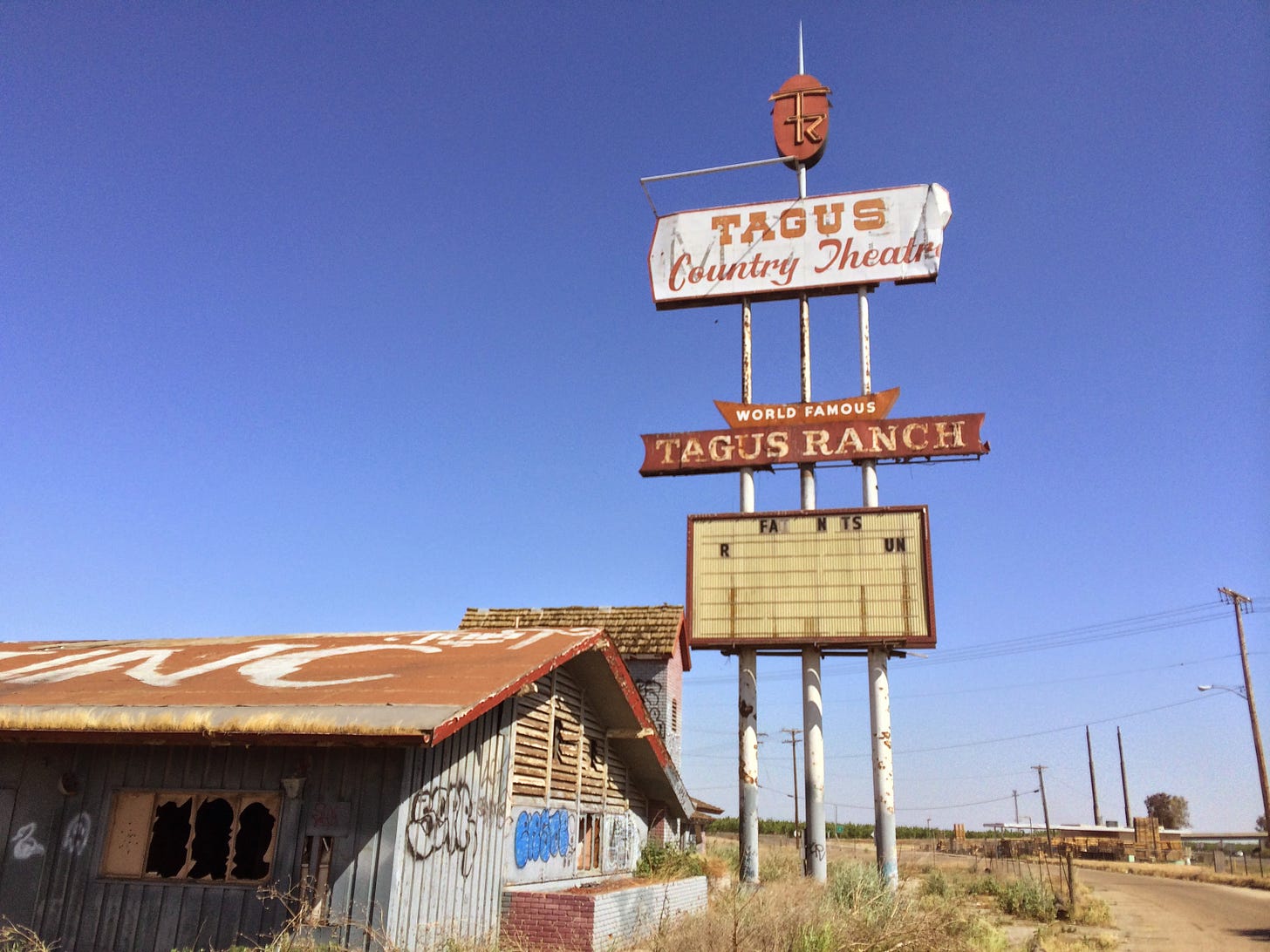
In April 2014, on a drive down I-99 along the Golden State’s spine, I spied a towering sign for a place I’d never heard of but instinctively grasped had countless stories and secrets, most surely taken to its grave: Tagus Ranch in California’s Tulare County
In its final iteration, Tagus Ranch was a country music venue, a honky tonk that attracted headline names until closing, the facility slowly succumbing to the elements.
But in its earlier and more famous life, Tagus was a massive farm that shipped a famous peach to the world, a company town whose 1930s labor strife seized the region in tumult and caught the attention of the author John Steinbeck.
Tagus Ranch was founded in 1912 by Hulett C. Merritt, a mogul whose giant fruit operation here centered around peach canning and the distribution of his famous Merritt Peach that was reportedly served at the Waldorf=Astoria.
The land was dotted with labor camps, and the workers were paid in scrip — money that could only be redeemed in the company store. Tensions grew, and a labor strike was sparked at Tagus Ranch in 1933 that spread across the farming region. The strike is said to have inspired Steinbeck’s 1936 novel, “In Dubious Battle.”
Merritt died in 1956, and the land was sold off in chunks in the 1950s and 1960s. With the days of the camp far behind it, the Tagus name carried on with a motel and restaurant. The restaurant would fall to flames twice, and the site would host a honey tonk, attracting notable country-music names.
This write-up over at public radio station KVPR brought back wonderful memories of my brush with this dusty outpost 11 years ago, and my accidental stop here was fortuitous. In less than a year, the sign would be taken down and placed in storage.
As I wrote in August 2014:
Rich in history but now deep into a seemingly irreversible decline, Tagus Ranch compels a pullover from Route 99 north of Tulare, California. Once a thriving motel, coffee shop and live music venue, Tagus is withering away, a beautiful ruin that maintains its dignity despite the elements and vandalism
The site of the motel and entertainment venue was redeveloped into affordable housing called Madson Gardens.
It reminds me of another Central Valley icon that I shot on this trip that would be demolished soon after, The Astro Motel, which should have been re-created for Wes Anderson’s 2023 film, Asteroid City.
Sometimes, I feel like the Grim Reaper. When I show up, it’s a sign the place is doomed. Sigh …
A new ‘Frontier’ for Wyoming’s discarded signs
Cowboy State Daily has a wonderful profile of the Frontier Auto Museum in Gillette, Wyoming. The curators are putting together a Neon Park to showcase large, historic signs the museum has salvaged from around the Cowboy State. The signs are being restored, though not necessarily to exact specifications, trying to strike a cost-effective balance between practical restoration and pristine preservation.
The indoor museum has a fine and vast collection of Americana, including old roadside signage, but the size and scope of these recent rescues required creating an outdoor setting. The museum hopes to have the Neon Park going by this summer, and eventually offer overnight stays for those who want to sleep in trailers amid the sensational signage.
As I looked through photos of some of their acquisitions, I was pleased (and saddened all at once. You undoubtedly know the feeling) to see one of my favorite signs in Laramie among the rescued. The museum thankfully saved the neon sign for the Thunderbird Lodge from the scrap heap after the motel closed. I was lucky to see it in the wild — and still in fine fettle — back in 2014.
The museum has saved another classic that I shot on this same trip: the gigantic sign for the Wyoming Motel in Cheyenne. The museum is aware of the Joe’s Liquor sign in Rock Springs I profiled in my previous newsletter, but does not have the resources to save it.
Per the publication, quoting the museum’s operations manager, Ryan Swanson:
“We’ve never gone out of our way to find these signs — they find us,” he said. “There’s a Joe’s Liquor sign in Rock Springs that’s really cool and iconic, but we don’t have the time or the money to go get it. We hated to pass on that one, but I don’t think it’ll end up in a dump. Someone will save it, and that’s all that matters.”
Kudos to the team at the Frontier Auto Museum. I look forward to visiting soon. More info about the museum can be found here.
Notes From the Road
I told you in a recent newsletter about plans to restore the Bill’s Take Out sign in Santa, Maria, California. Well, the work is done and the sign was recently put back in place. It looks AMAZING! Congrats to neon tube bender Larry Desario, sign painter Aaron Cribbs, and Southpaw Sign Co. in Oceano for restoring this beloved 1950s classic to its long-lost splendor. Below is how I found it back in July — crusty, rusty and crying for a little TLC.
The great Los Angeles writer and historian Chris Nichols reports on the transformation of the classic Farm House Motel in Riverside, California into a “music, dining and shopping destination center” marked with the restored neon sign. Derelict for decades, the motel had a rustic motif, a fiberglass horse and carriage outside, and rooms that resembled tiny barns. The complex is now called the Farm House Collective.
Gennaro's Bar and Lounge on South Broadway in Denver, Colorado, an Italian dining staple since 1951, has closed. The sign, however, is staying put — and that’s a promise. Westword explains why.
The Teepee Drive-in in Sapulpa, Oklahoma, is celebrating its 75th anniversary by screening films from not the 1950s, but the 1970s. Here are the groovy listings!
The Lafayette Hotel in Easton, Pennsylvania, was damaged in a fire that left its top floor uninhabitable, but the fire department quickly put the blaze out. The Lafayette Bar on the ground floor next door remains open despite some damage.
The historic Alburtis Tavern in Pennsylvania’s Lehigh County has been ordered closed, has been condemned, and is now for sale.
Somebody please save this Frank Lloyd Wright house in Chicago’s West Side, which has been sitting vacant for several years and is quickly deteriorating. The Joseph Jacob Walser House is the only Prairie Style Wright home in this neighborhood.
The famed M&M Bar & Cafe neon sign has been returned to its longtime perch in Butte, Montana. It was not there when I visited a few years back.
Toys “R” Us never went out of business in Canada, and one of the most beloved locations, in Vancouver, is closing. Folks are concerned about the future of its cherished sign, not so much for the TRU but the historic layer behind it, the towering BowMac sign, that was partially covered up. The sign for the car dealership even has its own Wikipedia page.
New neon signs continue to go up along Route 66 in Tulsa, Oklahoma, and the latest is at Hillcrest Medical Center. It has auspiciously received the 66th neon sign grant along Route 66.
A historic dive bar, Dick’s Place, in charming Mendicino, California, is for sale.


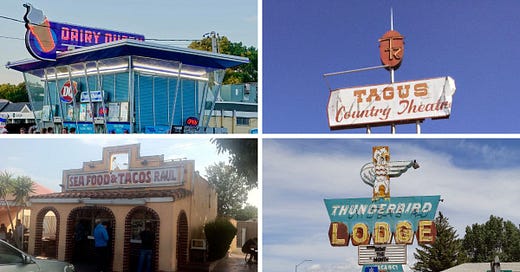






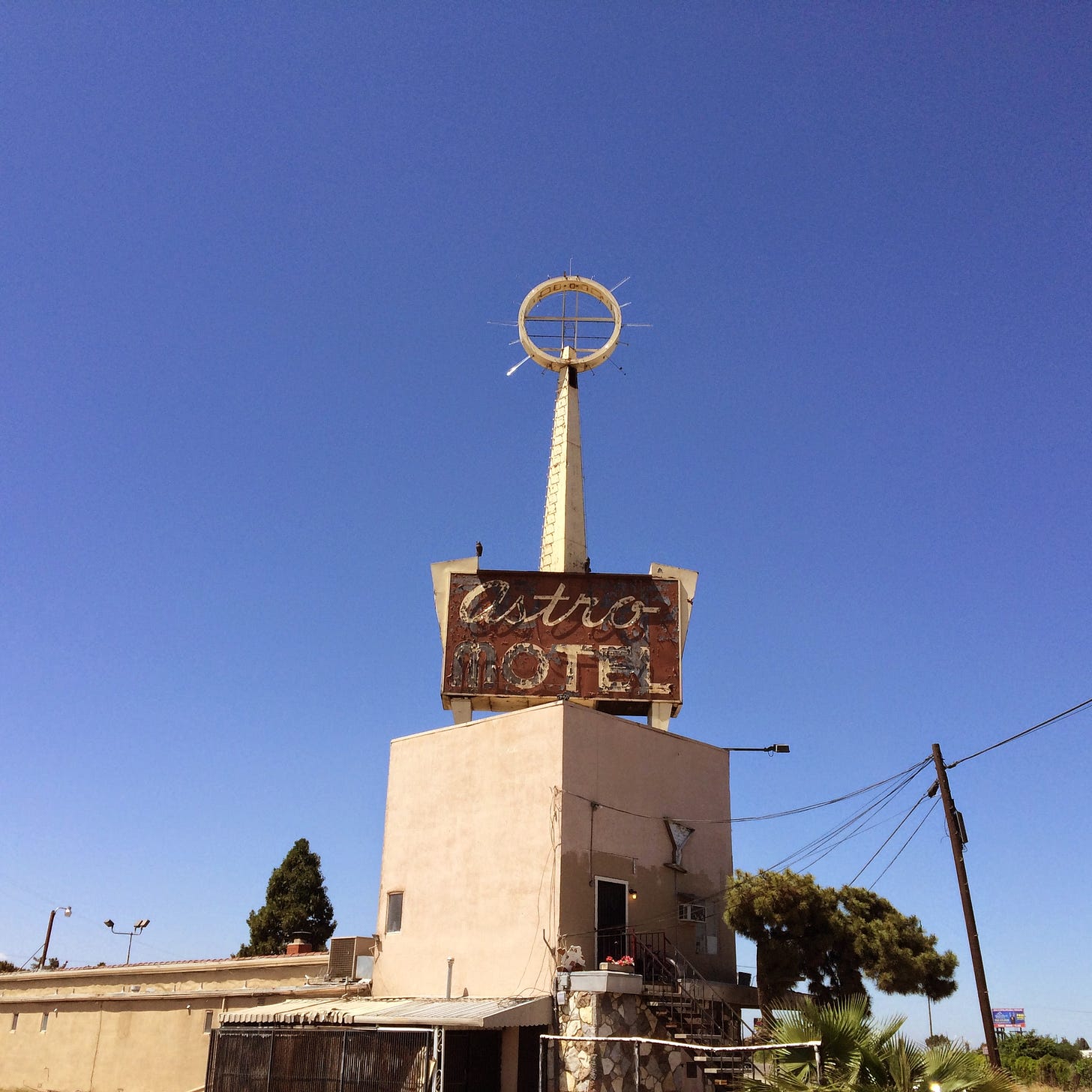

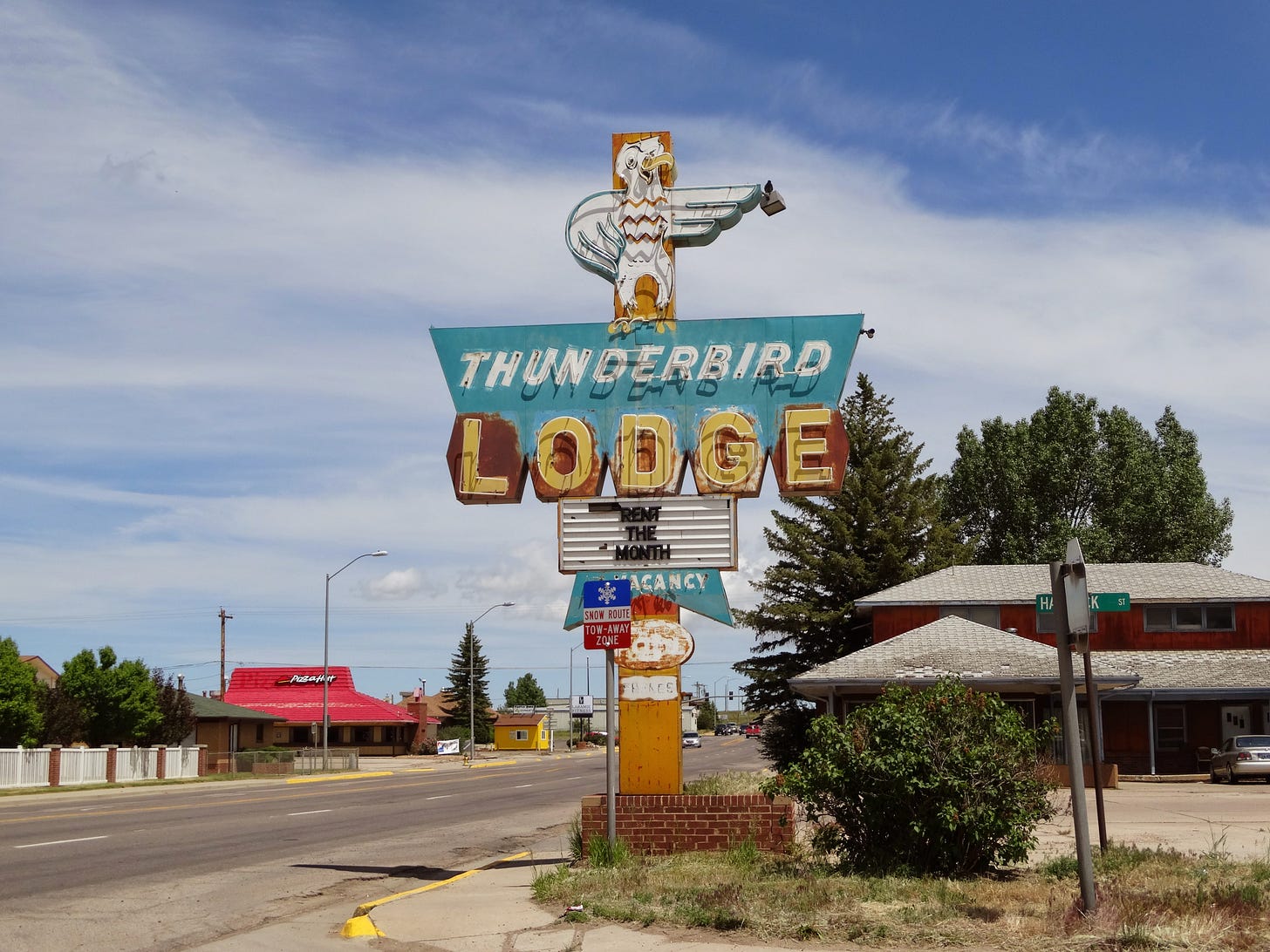

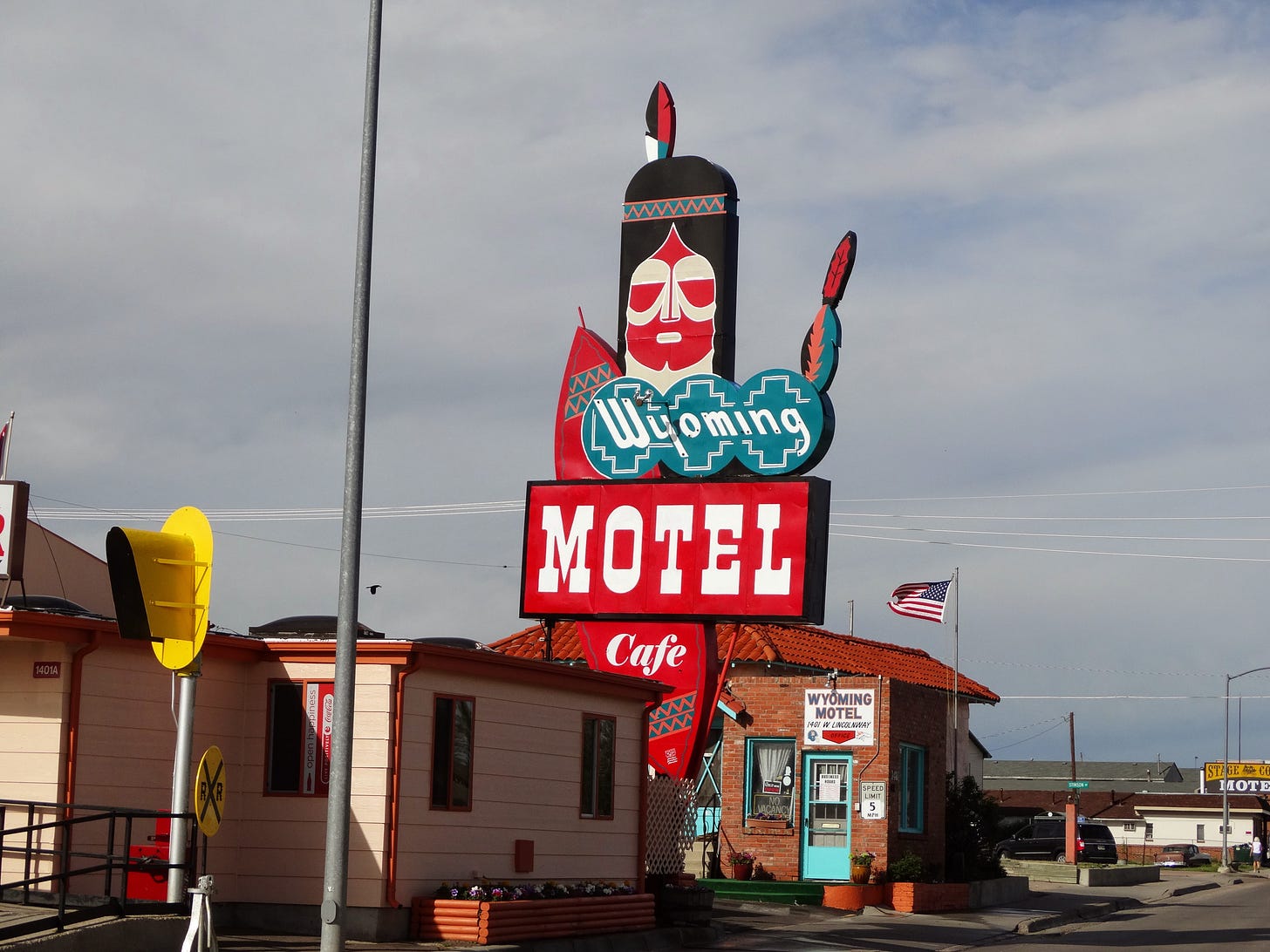



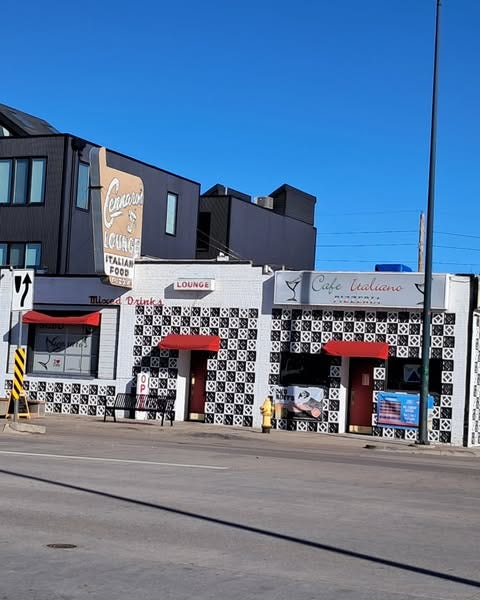
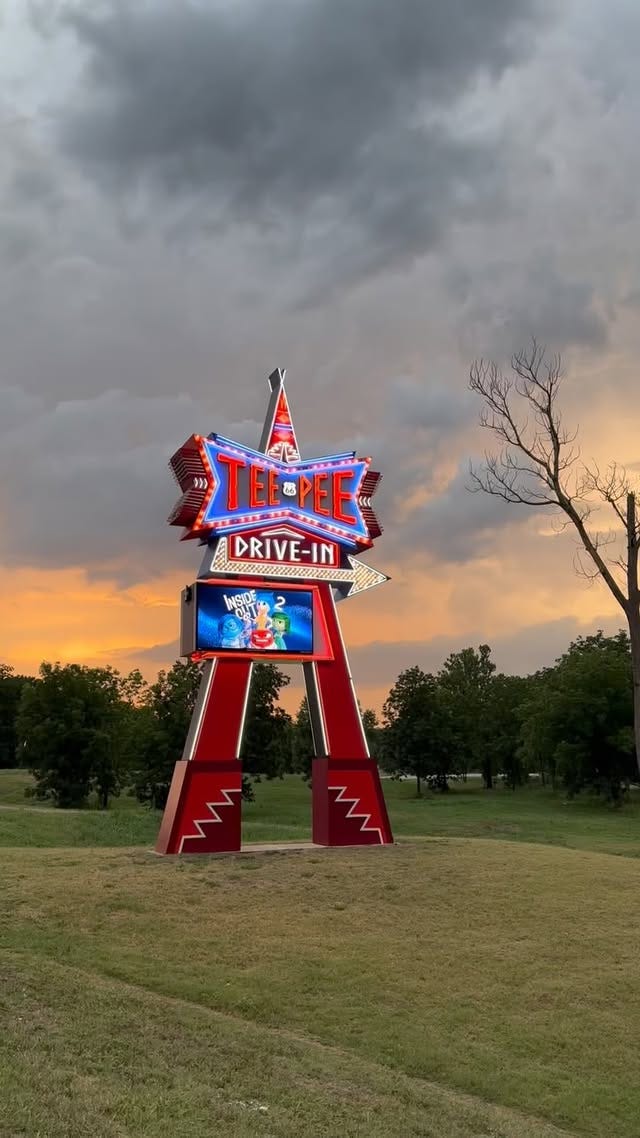
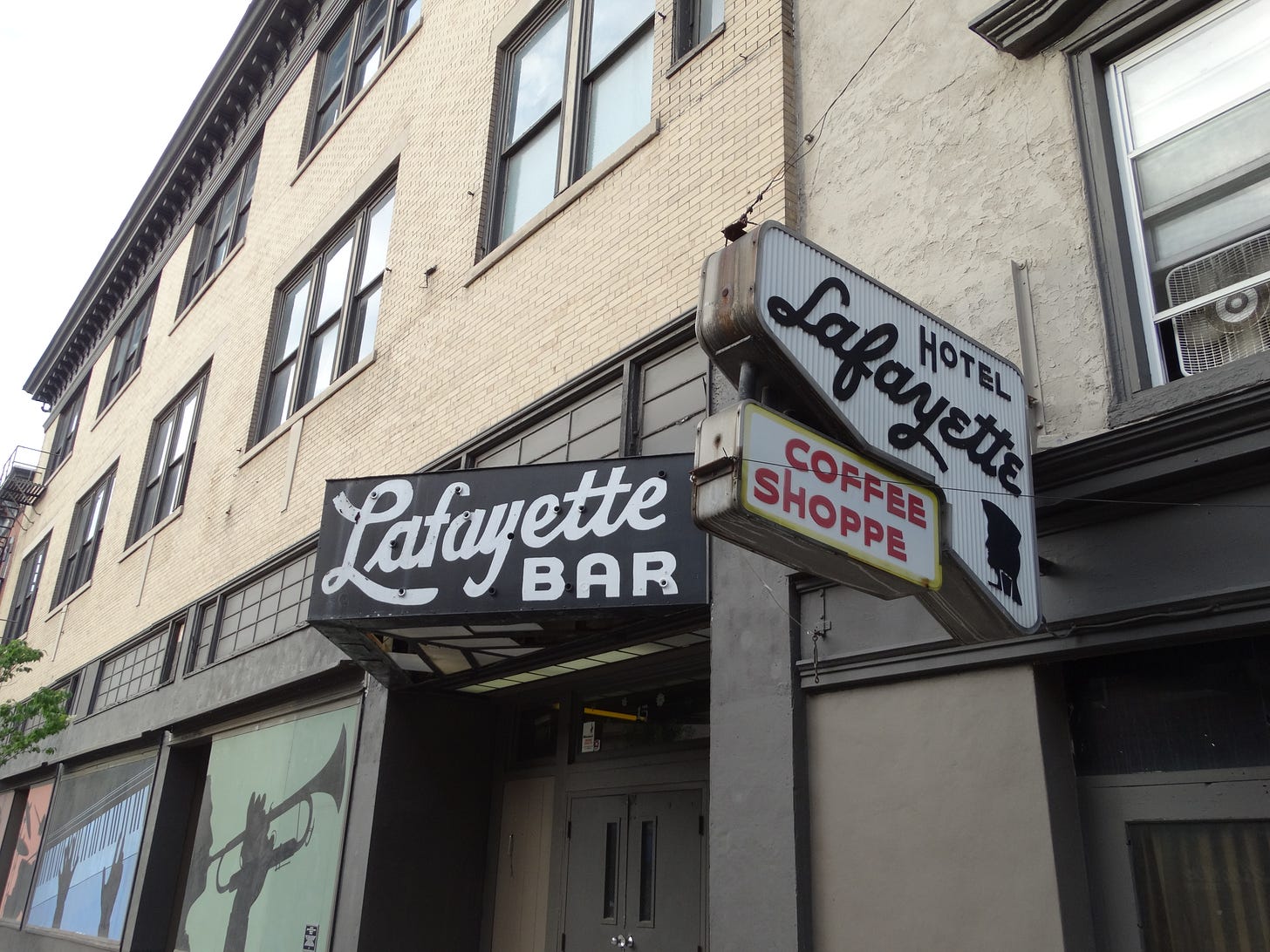

I grew up going to that Dairy Queen, and my sister in-law worked there for years. My parents still live very close to it as well. It would be a shame to see it disappear. Seems like my brother told me a girl I went to high school with took it over which would make her the last owner, so not sure what happened there.
"Sometimes, I feel like the Grim Reaper. When I show up, it’s a sign the place is doomed. Sigh …" It's like the alleged announcer jinx: they can't blame themselves when a player finally misses a free throw.